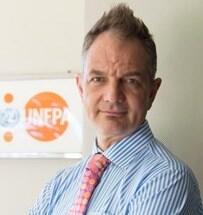Recently, I was sent a WhatsApp message; a video from Youtube. Apparently, this video had been running rounds in Uganda’s social media since April 2017, when the news featured on one of the prominent TV stations in Uganda. The video is about 39-year-old Mariam Nabatanzi who was married off at 13 years and has given birth to 44 children.
The details of Mariam’s life – married off in childhood, being pregnant as a young teenager, and not able to access family planning services, and without proper access to education – highlight the persistent inequalities to accessing healthcare and basic human rights.
On 17th October, UNFPA, the United Nations Population Fund launched the State of the World Population Report 2017. The Report, “Worlds Apart: Reproductive Health and Rights in an Age of Inequality,” makes a case that national economic growth is not sufficient to improve the well-being of people unless, economic growth is truly inclusive.
The report shows that it is difficult to build the wellbeing of individuals, including their health and their education, without each individual being free to exercise his or her rights. A universal right is one that applies to everyone, everywhere, regardless of income, ethnicity, place of residence or any other characteristic. Yet, for many women and girls like Mariam, their realities are different.
According to the 2016 Uganda Demographic and Health Survey (UDHS), 28 per cent women who would like to use a modern form of contraception do not have the means to do so. A big percentage of them got married in childhood, the UDHS also shows that 49 per cent of women between age 20 and 24 got married before their 18th birthday.
Child marriage is one of the most significant, albeit not exclusive drivers of teenage pregnancy. No wonder therefore, that Uganda has one of the highest teenage pregnancy rates in the world, persistently stagnating between 24 and 25 per cent in the last two decades. Teenagers in the lowest wealth quintile tend to begin childbearing even earlier. High levels of teenage pregnancy correlate strongly with rapid population growth.
With an annual population growth rate of 3%, Uganda has one of the fastest growing populations in the world. This creates a high child dependency ratio that places a heavy burden on the working age population. This in turn is an obstacle to reducing poverty inequality, especially at households level.
Income inequality cannot be effectively tackled unless the underlying inequality of opportunities is addressed. Eliminating discriminatory laws, policies and practices and promoting appropriate legislation, policies and action is critical. Barriers to girl’s access to education should be broken down so that they attain skills to ably compete with their male counterparts on the global market. Access to quality reproductive health information and services across age brackets and between the urban and the rural populations needs to be addressed.
The UNFPA report shows that the power to reduce inequalities is in our hands. We need more of a concerted effort to elevate the status of women and girls, to rectify inequalities in access to quality reproductive health services and to protect the human rights of everyone, so that everyone can attain their full potential. Reducing persistent inequalities and ensuring equal and universal access to reproductive health and rights is one of the keys for Uganda to obtain middle income country status by 2040.
By Mr. Alain Sibenaler, Representative, United Nations Population Fund.


